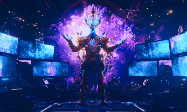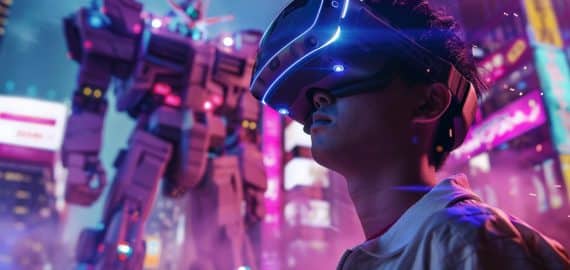Revolutionizing Gaming through Web3: A New Chapter Begins
The gaming landscape is on the brink of transformation due to this blockchain-driven framework for the internet. At the forefront are Web3 games, which offer new avenues for player interaction, ownership, and financial engagement.
The Evolution of Gaming through Web3
Web3 gaming diverges significantly from traditional gaming paradigms. Unlike conventional models dominated by centralized control, Web3 games leverage decentralized networks and utilize NFTs to create unique gaming interactions. Features like smart contracts, crypto wallets, and DAOs are redefining how players, developers, and in-game assets relate to one another.
One of the standout features of Web3 games is the concept of true digital ownership. Thanks to blockchain tech, players can not only own but also trade and sometimes even create in-game items like NFTs. This ownership transcends individual games, fostering interoperability between different gaming worlds.
The rise of Web3 play-to-earn games has also given birth to innovative economic models within the gaming sector. By integrating economic activity with entertainment, players can earn cryptocurrency or other digital assets through gameplay. Although the initial buzz around play-to-earn Web3 games has somewhat faded, the concept continues to evolve and solidify its place in the wider gaming sphere.
Prospects and Challenges in Web3 Gaming
Web3 gaming holds immense promise, but it also faces numerous challenges. Many initial Web3 titles struggled due to unengaging gameplay, poor user interfaces, and a heavy emphasis on financial gain rather than entertainment. Aspiring players may find themselves overwhelmed due to the complexities of blockchain tech and the necessity to grasp cryptocurrencies.
Technical constraints also pose a considerable hurdle. Issues like latency and other gameplay deficiencies, stemming from scalability and network performance challenges, make Web3 games less competitive compared to traditional gaming experiences. Security remains a pressing concern, as vulnerabilities could potentially lead to significant losses for players.
However, these challenges also open doors for innovation. As technology progresses and developers gain more experience, we can expect to see more intricate and engaging Web3 games. The fusion of AI, VR, and machine learning could lead to unprecedented levels of immersion and player engagement in these gaming systems.
Utilizing DAOs to foster player-driven gaming represents another fascinating opportunity. By allowing players to vote on changes and actively contribute to the game's evolution, Web3 games could cultivate responsive design and highly involved communities.
The Future Landscape of Web3 Gaming
Looking ahead, Web3 has the potential to revolutionize gaming entirely. The blockchain foundation for Web3 games paves the way for improvements in visual quality, user interaction, and in-game economies. The potential integration of virtual reality might offer vast, immersive game worlds with unrivaled graphical fidelity.
There’s a possibility for games to connect with one another, facilitating the transfer of characters and assets across different gaming realms. This could give rise to expansive metaverse-like environments, where digital identities and assets are retained across multiple games and platforms.
Moreover, the financial dynamics of Web3 gaming could undergo significant shifts. Despite initial challenges with the play-to-earn model, more sophisticated economic frameworks could evolve, building sustainable game ecosystems that benefit both players and developers alike.
Though we are still in the early stages of Web3 game development, its potential to usher in significant changes across the gaming landscape is undeniable. Prepare for an influx of captivating Web3 experiences as developers refine their techniques and overcome technological challenges to craft unique gameplay interactions.
In conclusion, Web3 is reshaping the gaming landscape, introducing new concepts of player empowerment, ownership, and economic involvement. There remains considerable room for creativity within Web3 gaming, which is still developing. Stakeholders and developers should brace themselves for an exciting journey down this innovative path.
Disclaimer
In line with the Trust Project guidelines Please be informed that the information on this page is not meant to offer legal, tax, investment, financial, or any other type of advice. It is crucial to invest only what you can afford to lose and to seek independent financial guidance if uncertain. For more details, we recommend reviewing the issuer or advertiser's terms and conditions and support resources. MetaversePost is committed to delivering accurate and impartial reporting, but market conditions may change unexpectedly.







